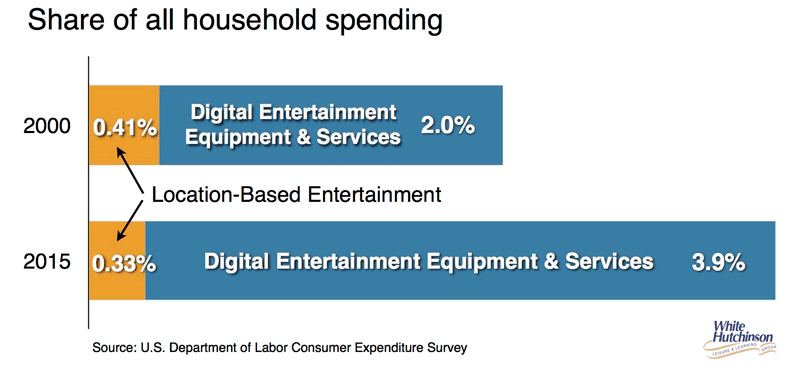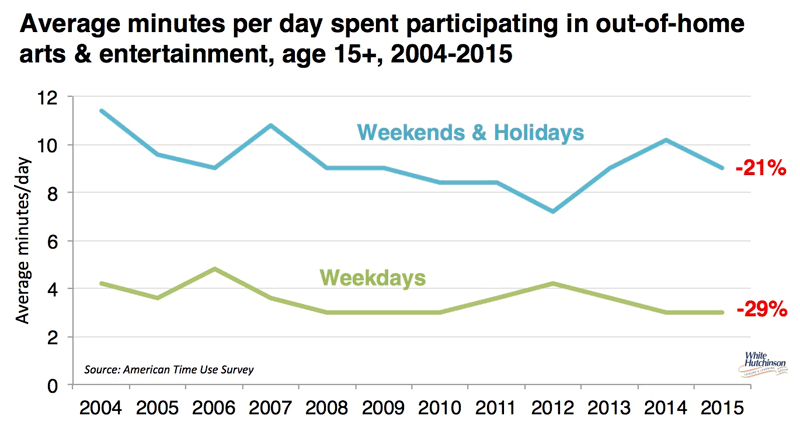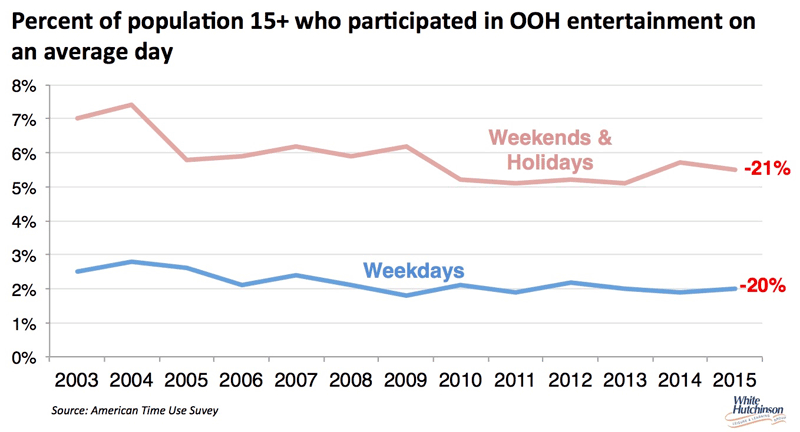
Vol. XVII, No. 2, February 2017
- Editor's Corner
- Staying in is the new going out; welcome to Generation Homebody
- Are staycations going kaput?
- 3 seminar programs and 2 trade shows for the price of one
- Digital now has a necessity status
- The rise of bar-tainment
- 3.4 million missing babies
- Benchmarking mediocrity
- Consumer trends in 2017: 36 expert perspectives
- Is your website ADA compliant?
Digital now has a necessity status
Nation's Restaurant News recently featured a blog, “Is Netflix stealing sales from restaurants?” The main point of the article was that consumer spending on new digital necessities could be taking spending away from restaurants.
What are those new necessities? They are the technological devices and services that we didn't have nor knew we needed a decade or so ago. They're things like smartphones, cellular services, digital cable and subscriptions such as Netflix and Spotify. In a sense, they're a whole new category of digital goods and services, what we've named eleisure. And as necessities, the time and money we spend on them is taking precedence, actually displacing, some of the time and money we spend on many other out-of-home (OOH) experiences, not just restaurants, but also other forms of out-of-home leisure, including entertainment venues, such as community leisure venues, including FECs. Yes, the growing necessity status of e-leisure is disrupting location-based leisure options that only rate as discretionary for our time and money, not as necessities.
This is not just conjecture. Our company's research shows this is actually happening. Spending of both money and time on all types of digital equipment and services is on the increase, while it is flat to declining for out-of-home (OOH) leisure/entertainment.
The share of all household spending devoted to all types of digital entertainment and services has almost doubled since the turn of the century, whereas the share devoted to OOH entertainment has declined by one-fifth.

Likewise, the average time spent on OOH entertainment has declined, by about one-quarter.

The decline in both spending and time for OOH entertainment is basically attributable to a drop in OOH participation.

So what does all this mean for community-based entertainment and leisure venues? What is the effective strategy to compete with the siren call of the at-home and screen-based digital world that has now taken on a necessity status versus discretionary OOH entertainment?
We can look to the movie theater industry for some answers. That industry now has to compete with streaming and binging Netflix, 100s of cable channels, on-demand movie streaming and high definition, large screen and surround sound viewing in the comfort of home. So after seeing per capita cinema attendance decline by one-quarter since 2002 (-25%), some operators in the cinema industry figured out that they needed to compete with the living room experience, not just with consumers' screens. So many movie chains are in the process of remodeling their theaters. And this involves a lot more than digital projection, IMAX and fantastic surround sound. They're upgrading the entire movie-going experience. They're tearing out all of the stadium seating and replacing it with electric leather reclining lounge chairs. It's no longer just popcorn, pizza and soft drinks purchased at a concession stand. They're upgrading the food offerings to chef-driven menus complete with alcoholic beverages and seat-side service. And recognizing the high value for people's leisure time, they're letting you reserve your seat in advance. So what's the result? Although they've decreased the seating capacity to only 1/3 to 1/2 of the previous capacity, attendance is up. They're also getting higher ticket prices. Their per capita food and beverage sales are more than doubling. So overall revenues are dramatically up.
What did they do? They raised the fidelity of the overall movie-going experience and they took the pain point out of having to get to the theater early to make sure you got a good seat, or any seat at all for a blockbuster. They turned moviegoing into a near-luxury premium experience. And people are gladly paying more for it, as it is perceived as having great value, even at a higher price.
Today, deciding to visit an OOH entertainment venue is more about whether the experience is a great value for the time and money invested than what the absolute price is. People would rather pay more for a higher quality experience than pay less for a mediocre one.
Community-based OOH entertainment venues need to take the same approach to compete with digital necessities. They need to stop focusing on just the entertainment and look at the entire guest visit experience. That includes understanding that food and drink is a major part of the experience and that the ability to make reservations so you don't waste your limited leisure time waiting to enjoy the experience is important. Offering a highly social experience is also critical. It also means no longer targeting the middle class, but rather the upper-middle and college educated consumer who now accounts for the large majority, almost three-quarters of all OOH entertainment time and spending. That means offering a far more upscale facility and quality hospitality experience than the typical FEC model.
Vol. XVII, No. 2, February 2017
- Editor's Corner
- Staying in is the new going out; welcome to Generation Homebody
- Are staycations going kaput?
- 3 seminar programs and 2 trade shows for the price of one
- Digital now has a necessity status
- The rise of bar-tainment
- 3.4 million missing babies
- Benchmarking mediocrity
- Consumer trends in 2017: 36 expert perspectives
- Is your website ADA compliant?


